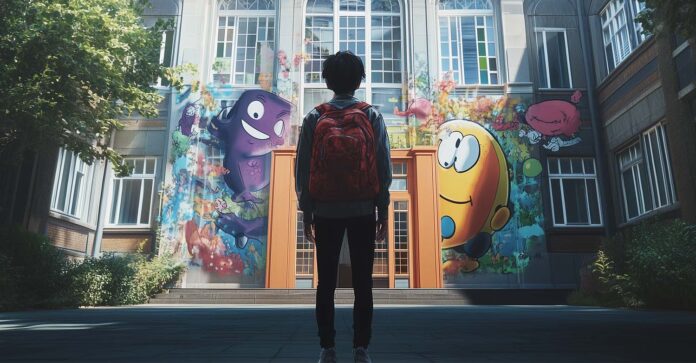Hybrid animation, also referred to as mixed media animation, is an exciting practice that can help your animation work stand out. Broadly speaking, hybrid animation blends two or more styles of animation and footage, so that could be 2D and 3D animation, or even 2D animation and live-action.
We understand that exploring your first hybrid animation project might be daunting, so we’ve gathered some tips from our experts to help make the process a bit easier.
References and Research for Hybrid Animation
A natural starting point for entering the world of hybrid animation is, simply, to see what’s out there!
There is an incalculable amount of mixed media animation out there that blends various forms of animation and other visual elements. Taking some time to see what’s out there before starting work on your project can help provide inspiration and insight into what you want to achieve.
Many animators, artists, and other creatives don’t just showcase their work online, but they document the interesting steps they take in completing their projects. They highlight the tools they use, the practices they employ, and other helpful information for would-be hybrid animators. Observing these steps in whatever form they come in, be it blogs, videos, or tutorials, can be invaluable in establishing the right mindset for mixed media animation.
Moreover, connecting with hybrid animation specialists and learning from their experience with their material on social media, or perhaps even the opportunity to speak with them directly, can be a valuable way to help learn what to do and what not to do before working on your project and during its lifecycle.
Choosing the Right Software
We know as well as any other animator that we all have our preferences for one reason or another – one tool has better UI, whereas another might be more intuitive or simply be more financially viable. For hybrid animation, it’s best to weigh your options carefully to make your work a little bit easier.
Adobe After Effects, for example, might not be your personal favorite software, but it’s a powerful tool for mixing 2D and 3D animation.
Toon Boom Harmony might be best known for its 2D animation capabilities, but its facility to import 3D animation and insert it into 2D scenes can be extremely helpful for hybrid animation projects.
Autodesk Maya is a very popular tool for 3D work, but it can also be used effectively for hybrid animation.
Regardless of your preferred animation software, it’s worth checking out what else is available on the market for mixed media animation projects. You might be pleasantly surprised to find something suitable for hybrid animation and what you generally look for in animation tools!
Carefully Considered Hybrid Animation Planning
This tip applies to animation projects of all kinds, but if you’re entering the exciting world of hybrid animation for the first time, it’s paramount that you make sure you’re prepared and plan carefully as best as possible.
From our experience working with mixed media animation, we can attest to the benefits of carefully considered project planning.
Develop several creative ideas to play around with and run with whichever captures your interest the most. Take plenty of time to craft a detailed storyboard to map out different sequences and animatics to work out timing and transitions. Taking the time to craft cohesive storyboards and animatics helps you see how it can come together and how you can mix different elements for your hybrid animation.
When your animation work begins in earnest, take the time to carefully apply naming conventions and folder structures so that your hard work doesn’t get lost in the shuffle.
Though these practices are wise to adhere to for animation projects of all kinds, remembering and reinforcing these basic tenets are valuable when venturing into unexplored territory like mixed media animation.
Gathering Feedback and Iteration
Heading into a previously unexplored style like a hybrid animation can be equal parts exciting and intimidating. The more you work on your mixed media animation project, the more your confidence can grow, but so too does the need for extra pairs of eyes on your work.
Seeking the feedback of trusted individuals can help alleviate anxieties around this kind of work. Asking friends, colleagues, peers, or whoever is in a position to help, to review your work and provide constructive feedback is exceptionally valuable.
Whether they’re an expert in animation or animation software or even work in an entirely different discipline, constructive feedback is a pathway to improving your hybrid animation project and laying the groundwork for iteration.
Where animators can lend their expertize to movement and action, digital artists can advise on rendering and the raw visual element. Where a creative director can provide insight into your overall creative direction, a scriptwriter can suggest improvements to plotting and dialog (if applicable).

